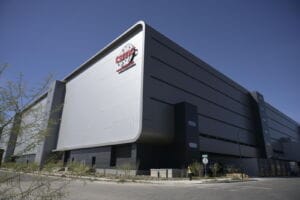Arizona has always been known as a great place to start and grow a business. While some industries have been staples of our economy for some time, there’s another growing industry that is bringing jobs, capital, and most of all, innovation, to our state. Arizona has, in recent years, become home to a growing number of biotechnology and medical device companies.
At the heart of every one of these companies is an entrepreneur with a vision and an idea. Some of these entrepreneurs are starting a biotech or medical device company for the first time. That’s scary enough. But the biotech world comes with a whole other set of hurdles that makes it even harder to go to market. One of the first and most important hurdles is getting U.S. Federal Drug Administration clearance. This is a challenging process every biotech, medical device and pharmaceutical company has to face. Here’s an inside look at how startup biotech companies gain clearance for their products and bring them to market.
For starters, which companies need FDA clearance and which ones can bypass the process? Basically, if a company plans to sell its product directly to physicians and hospitals, and wants insurance companies to pay for it, it needs that FDA clearance. All entrepreneurs in this space need to ask themselves that same key question when they start a new venture: Who are you selling this to?
For a small startup biotech business, or even just an engineer with an idea, the FDA process may seem daunting, costly, and in some cases, unnecessary. Many companies try to shortcut the system or choose instead to market under homeopathic regulations, which are quite different than the FDA’s. In these cases, there is often (but not always) less testing or insufficient data to support claims of what the product can do. In some cases, small businesses think the FDA makes the process so difficult and costly they simply can’t do it. It’s important for these startups to remember that gaining FDA clearance should be seen as an investment in their company that allows them to market effectively. It may seem stifling, but it also opens doors to sales channels that wouldn’t be available otherwise and can be very lucrative.
The public often doesn’t realize there are different types of FDA clearances biotech, pharmaceutical or medical device companies can apply for.
Pharmaceutical companies apply for a new drug application, while medical devices fall into three categories:
Class 1 — This is for low-risk devices and it costs almost nothing to submit for this clearance.
Class 2 — This is for devices that are substantially equivalent to other devices already on the market. This process can cost about $4,000 just for the submission, not including the cost of testing and developing the submission.
Class 3 — This is for new devices or devices that are deemed life supporting/assisting and can cost millions of dollars after testing and the application process is complete. It’s important to remember that only products with a Class 3 are FDA approved, while the others are FDA cleared. FDA approval simply means that the FDA was involved in the testing and it was a new product unlike any other on the market.
Any startup biotech company will want to spend ample time researching the guidelines and class definitions before applying for FDA clearance. It seems like a tedious process, but it is a sound time investment and helps ensure the company only needs to go through the process once per product. Any mistakes along the way can result in going back to the drawing board and starting the process all over again.
To avoid this, these companies need to hire employees and consultants who have been through the process and can lend guidance from experience. Also, it is strongly advised to open a dialogue with people at the FDA. They are there to help companies get through the process smoothly and efficiently, and can help a startup overcome challenges along the way.
So when should you start the process? In most cases, a company will wait until it has a product prototype or a design it’s happy with before starting the application. The process to apply can often begin at the start of the business, but the real work begins once the company has something that can be tested for safety and efficacy. The good news is once the submission is complete, and if everything in the application meets the FDA’s requirements, it will only take 60 to 90 days on average to hear back from the FDA.
Once a company considers FDA clearance they can also expect some changes to their business. As with every form of government licensing, the FDA has rules and guidelines that must be followed, and these are known as the quality systems requirements. This is simply a form of management by the FDA that ensures biotech companies offer a consistent level of quality in every aspect of their business and are marketing products in a way that will not deceive or misguide the public.
In the end, every biotech company has to decide how they are going to grow their business. As we see more and more medical device and other biotechnology companies emerge in Arizona, we’ll see them go to market in vastly different ways.



